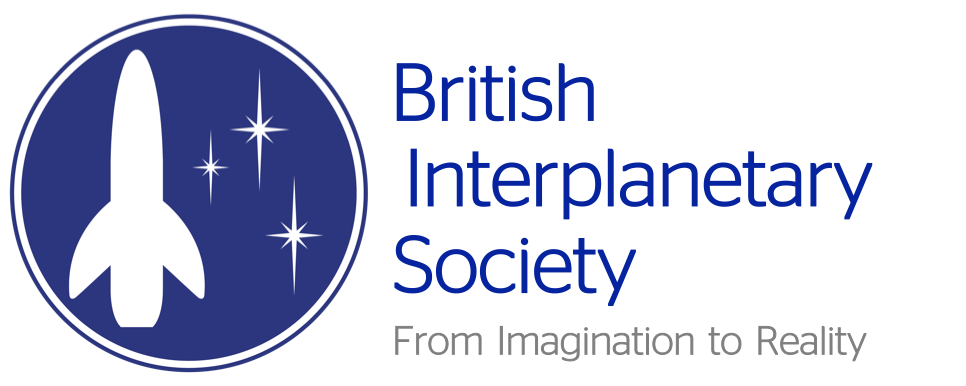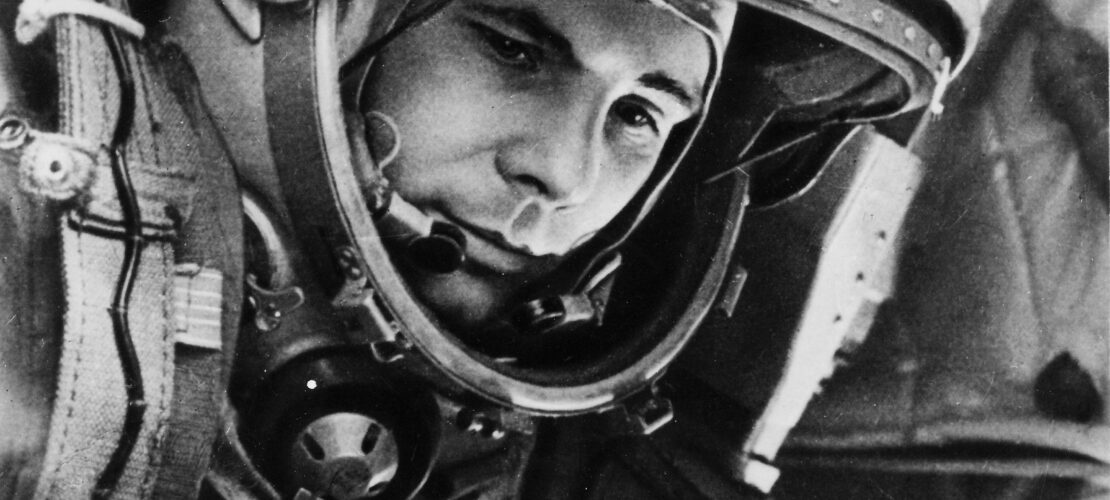The Beyond the Moon Programme for 12th April 2021 is now available. The inaugural event is taking place on the 60th anniversary of Yuri Gagarin's successful space flight – the first time humanity reached space. Around the world, 12th April is noted as Cosmonautics Day.
Programme
Join us on our Orbits live platform for networking opportunities in our virtual coffee bar and lobby.
Welcome from symposium host and BIS Past President, Alistair Scott. Alistair worked in the aerospace industry from 1967 – 2011. Beginning his career at Hawker Siddeley Aviation as an undergraduate apprentice, he retired from EADS Astrium in 2011. Alistair joined the Society in 1995, became a Fellow in 2001 and was elected to Council in September 2007 and served as President of the Society from September 2012 to July 2015.
Gerry Webb is President of the BIS. All of Gerry’s working life has been in the space field, beginning with the radio tracking of Sputnik 3 and other early Soviet satellites in order to measure ionospheric parameters. Gerry founded Commercial Space Technologies Ltd (CST) since in 1983.
—
Alan Bond is an engineer, with a degree in Mechanical Engineering. He worked on liquid rocket engines, principally the RZ.2 (liquid oxygen / kerosene) and the RZ.20 (liquid oxygen / liquid hydrogen) at Rolls Royce under the tutelage of Val Cleaver, and he was also involved with flight trials of the Blue Streak at Woomera. He worked for the UK Atomic Energy Authority for around 20 years, before forming Reaction Engines in 1989. He retired in 2017, then forming Mirror Quark.
Anatoly became a Soviet cosmonaut in 1985. Artsebarsky has spent almost 5 months in space on a single spaceflight. In 1991, he flew aboard Soyuz TM-12 and docked with the Mir Space Station. Artsebarsky and Sergei Krikalev stayed aboard Mir while the rest of the crew flew back to Earth after eight days. Artsebarsky took six spacewalks during the Mir EO-9 mission. He spent over 33 hours walking in space. He was the Commander of the mission when Helen Sharman became the first Briton in space.
The Armstrong orbital factory is designed to process regolith from carbonaceous near earth asteroids (NEA) to produce fuel for use in cis-lunar space. It consists of a receiving station for raw materials together with the associated materials processing equipment for the initial products of water, fuel, and air.
Dr Richard James Soilleux is leader of the BIS SPACE (Study Project Advancing Colony Engineering) Project. He has authored, or co-authored, some 14 space themed papers published in JBIS and elsewhere. His career was with the MoD in chemical defence spending many years devising and conducting field experiments, some using satellite imaging. He later specialized in the safe destruction of chemical weapons (CW) becoming a UN chief inspector in Iraq and leading the UK’s CW disposal team in Libya. He was also a technical adviser to the Japanese Government for the disposal of legacy CW in China.
This paper tests the feasibility of an interplanetary ship building on work carried out for the BIS SPACE Project including Avalon, an almost self-contained orbital habitat, and an orbital materials Processing and Manufacturing Complex (OMPMC). Also included are concepts from Scorpion, a nuclear-powered spaceship, and the classic Daedalus study. The result is Chimera.
Dr Richard James Soilleux is leader of the BIS SPACE (Study Project Advancing Colony Engineering) Project. He has authored, or co-authored, some 14 space themed papers published in JBIS and elsewhere. His career was with the MoD in chemical defence spending many years devising and conducting field experiments, some using satellite imaging. He later specialized in the safe destruction of chemical weapons (CW) becoming a UN chief inspector in Iraq and leading the UK’s CW disposal team in Libya. He was also a technical adviser to the Japanese Government for the disposal of legacy CW in China.
The argument of this paper is that a shortage of water in near-Earth space will severely limit the scope of near-term industrial activities there, and this key resource should be devoted to longer-term goals.
Stephen Baxter MA PhD CEng FBIS is a writer of science and science fiction. A founder member of the UK SETI Research Network and a vice president of the HG Wells Society, he was first published in Spaceflight in 1996.
The paper discusses the necessary conditions for launching a spacecraft from the surface of the Moon to Earth using a pulse launch.
Professor Maslov is based at the Physics department of Bauman Moscow State Technical University.
Grab a bite to eat and learn about the history of British space exploration with our rolling presentation.
Mark McCaughrean is Senior Scientific Advisor at the European Space Agency. He is responsible for communicating the scientific results from ESA’s astronomy, heliophysics, planetary, and fundamental physics missions. His personal research involves observational studies of the formation of stars and their planetary systems using state-of-the-art ground- and space-based telescopes. He is an Interdisciplinary Scientist on the Science Working Group for the NASA/ESA/CSA James Webb Space Telescope. He holds a PhD from the University of Edinburgh.
Several of the Earth’s space agencies and commercial spaceflight companies have committed to landing humans on Mars by the 2040s. The health, wellbeing, and safety of crew is paramount for a successful Martian mission. Ensuring this involves several aspects of space medicine pre-, during and post-mission: clinical care, optimisation of human performance, and interdisciplinary intersection with engineering.
The 5 major health risks of a Martian mission can be summarised as “RIDGE” (NASA, 2021) – Radiation, Isolation & confinement, Distance from Earth, Gravity fields, and hostile/closed Environments. Together these 5 risks result in physiological adaptations including increased cancer risk, mood changes, sleep problems, fatigue, blood & fluid distribution changes, vision changes, bone and muscle mass loss, and many more known and unknown changes that we need to alleviate risk of and have countermeasures for.
Planning and self-sufficiency are key. To be prepared for this journey, much human physiology research will take place on long-duration ISS missions and Lunar missions.
Nina has an integrated bachelor’s and master’s degree in Astrophysics, a PhD in Breast Cancer Imaging, a Postgraduate Certificate in Research and Teaching in HE, has completed a postdoctoral fellowship in Oncological Imaging at MSKCC in New York City, and more recently attained an MSc in Space Physiology and Health whilst intercalating at King’s College London. Maia has worked as a physiologist and Chief of Staff at a fitness gaming company, applying her understanding of physiology to innovative tech that uses machine learning and AI to make exercise more accessible for all. Lauren is a 4th year medical student. Lauren has a MSc (Distinction) in Space Physiology and Health, has given a TEDx talk on space medicine, is the student chair for Next Generation of Aerospace Medicine, published on space nutrition in JBIS, & has active experiments on the ISS through working with school students to develop experiments at the ISSET Summer School at King’s College London.
Microbial risks in interplanetary missions are more complex than in orbital flight for several reasons: Cryptic microorganisms can settle and contaminate ships and spacesuits; chemolithotrophic microbes, inhabiting the planets, and predicting the effects on humans is challenging; and human microflora might modify in permanent off-Earth bases under the influence of lunar factors (low magnetics, rays, etc) creating dangers for those who arrive on future missions.
Ilyin Viacheslav Konstantinovich, born in Moscow in 1959, is Head of the Department of Sanitary, Chemical and Microbial Safety of the Environment in the Russian Federation State Research Centre at the Institute for Biomedical Problems in the Russian Academy of Sciences. He has been a Professor since 2000 and was awarded the Laureate of the Russian Federation Government for his work in the field of science and technique in 2004. He was awarded the Laureate of the Russian Academy of Sciences “Russian Doctors of Science” in 2003 and 2004. Professor Ilyin is a Member of the International Academy of Astronautics and is a Member of the Ecology Expert Council in Moscow City Council.
Patrick currently works at Reaction Engines Ltd – a company whose goal is to break the barrier to space with their revolutionary SABRE™ propulsion system. As an engineer in the Future Systems team, he investigates future applications of the engine, vehicle, and mission architectures to enable low-cost space exploration and development of space-based operations. Patrick is President of the Mars Society UK, formed as a chapter of the international Society. Established by Dr. Robert Zubrin and others in 1998, the Mars Society works to educate the public, the media and government on the benefits of exploring Mars and creating a permanent human presence on the Red Planet.
Fabrizio graduated as an electronics engineer from the University Sapienza of Rome, and started working as a freelance consultant in many different kinds of projects and applications, but with a main interest in aviation and space. He was part of the design team of an instrument now orbiting Mars, and he is responsible for its operations, while the rest of his time is devoted to other jobs in other programmes and science-related tasks. He is a Council Member of the BIS, and runs BIS Italia, an active branch of the Society.
Globus has produced an argument for the optimum overall shape for a large spinning space habitat, considering minimising overall wall area, maximising floor area while maintaining an inertia ratio compatible with stable spin. The resulting shape was a cylinder with a height 1.3 times the radius. This shape was used in Globus’ own Kalpana habitat designs and also the British Interplanetary Society’s Avalon study. Globus assumed a complete cylinder with a full disc end wall. Here we look at the impact of using a roof to create a torus, reducing the pressurised volume for a given usable floor area.
Mark’s long career in astronautics started at British Aerospace Space and Communications Division working as a systems engineer on communications satellites and infrastructure systems. In 1991 he joined the University of Bristol and became the Senior Lecturer in Astronautics. In 2008 he launched his own company, Hempsell Astronautics Ltd. Mark joined the Society in 1971 and elected to Fellow in 1984. He is a twice Past President (1997-2000 & 2015-2018), sits on Council, took up interim Editorship of SpaceFlight in March 2021, and is a past Editor of the Journal.
The continued growth and progress of civilisation is leading towards human colonisation of Mars and beyond – not instead of Earth, but in addition to Earth. Mars is more hostile and more remote than any desert on our home planet. Therefore successful cities on Mars will depend upon the prior creation of clean and sustainable desert cities on Earth.
Stephen works in academic publishing at the Voltaire Foundation within Oxford University. He has been a Fellow of the British Interplanetary Society since the 1980s, and an associate of the Initiative for Interstellar Studies since its founding in 2012.
Dr James Royse Murphy (MA FBIS FRCGP) trained in Medicine at Bristol University and has recently retired from over 30 years as a General Practitioner in Gloucester (UK). He completed a Masters in Medical Humanities at Swansea in 2004, and was a GP Trainer, student teacher, and lecturer in Ethics for Medical Students at Bristol for most of his working time. He also recently retired from regular ordained ministry in the Church of England after 25 years as an assistant priest.
Closing discussion reflecting on the themes of the day, featuring panellists from through the day and hosted by Alistair Scott.
A celebration of Yuri Gagarin for Yuri’s 60th anniversary, led by BIS President Elect and former Yuri’s Night organiser, Professor Chris Welch. The celebration will also provide an opportunity to raise a toast to celebrate this great achievement in human history.
About the event
The event will be held virtually, over Orbits. A ticketed event, the symposium will offer the chance to hear new insights, academic papers and international contributions. Questions are welcomed during the event, and will be put to our speakers by conference host, Alistair Scott.


